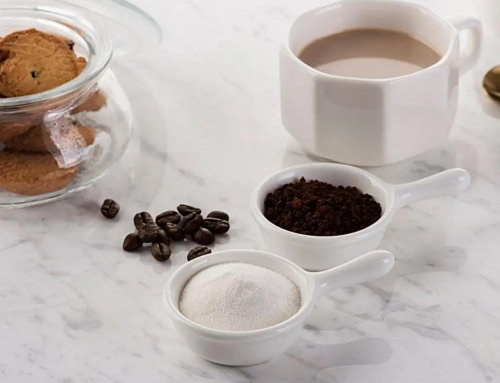The choice of encapsulation technology directly impacts product stability, release efficacy, and cost-effectiveness in the development of food, pharmaceutical, and functional products. Based on the latest industry research and practices, this article provides a detailed comparison of three mainstream encapsulation materials (MAG+DAG, Sodium Alginate + Sunflower Oil, and Ethyl Cellulose (EC) + HPMC), helping you align with technical needs and avoid bottlenecks.
I. Core Performance Comparison: Which Reigns Supreme?
Analyze key dimensions to identify material properties quickly:
| Evaluation Criteria | MAG + DAG | Sodium Alginate + Sunflower Oil | Ethyl Cellulose (EC) + HPMC |
| Encapsulation Efficiency | Moderate-High (ideal for lipophilic components) | Moderate (requires emulsifiers) | High (versatile for broad components) |
| Release Control | Short-to-medium term release | pH-dependent (gut-targeted) | Precision-controlled (tunable long-term) |
| Stability | Low oxidation resistance | Natural antioxidant (needs calcium crosslinking) | High acid/heat resistance, robust |
| Cost & Process | Low (food-grade, simple) | Moderate (higher alginate cost) | Moderate-High (pharma-grade, complex) |
Key Insights:
MAG+DAG: Cost-effective for rapid production, but requires oxidation management.
Sodium Alginate System: Natural + targeted release, yet limited for hydrophobic components.
EC+HPMC: Pharma-grade precision, but cost and sustainability trade-offs..jpg)
II. Practical Guide to Application Scenarios
- MAG+DAG: The “Efficiency Champion” for the Food Industry
Best Uses:
Encapsulating lipophilic nutrients (e.g., Vitamins A/D, Omega-3).
Flavor oil microcapsules (e.g., rapid-release spice oils).
Case Study: A leading health snack brand reduced costs by 30% using MAG+DAG to encapsulate curcumin while enhancing solubility.
- Sodium Alginate + Sunflower Oil: The “Natural Health Innovator”
Best Uses:
Gut-targeted delivery (probiotics, polyphenols).
Antioxidant functional foods (e.g., blueberry extract microcapsules).
Industry Trend: Driven by Clean Label demands, the natural encapsulation market is growing at 12% annually.
- EC+HPMC: The “Controlled-Release Expert” for Pharma
Best Uses:
Oral sustained-release formulations (e.g., ibuprofen enteric tablets).
High-value actives (essential oils, anticancer drugs).
Innovation: Combining chitosan for biodegradable systems to reduce solvent use.
III. Decision Tree: 3 Steps to Your Optimal Solution
Step 1: Component Properties
Lipophilic → MAG+DAG or EC+HPMC.
Water-soluble/Probiotics → Sodium Alginate system.
Step 2: Release Requirements
Fast release → MAG+DAG.
Sustained/Targeted release → EC+HPMC (long-term) or Sodium Alginate (pH-responsive).
Step 3: Cost & Process Balance
Budget-constrained → MAG+DAG (low cost + simple process).
High-value products → EC+HPMC or composite alginate systems.
IV. Future Trends & Innovative Combinations
Sustainability: Replace organic solvents in EC+HPMC with water-based processes.
Hybrid Systems: e.g., “MAG+DAG + Sodium Alginate” triple-layer capsules for rapid release + antioxidant protection.
Smart Encapsulation: pH/temperature-responsive materials for precision delivery (e.g., tumor microenvironment-triggered release).
V. Interactive Discussion: What’s Your Choice?
Which encapsulation material do you prefer in your projects?
Have you faced challenges due to material selection? Share your experiences!


Leave A Comment